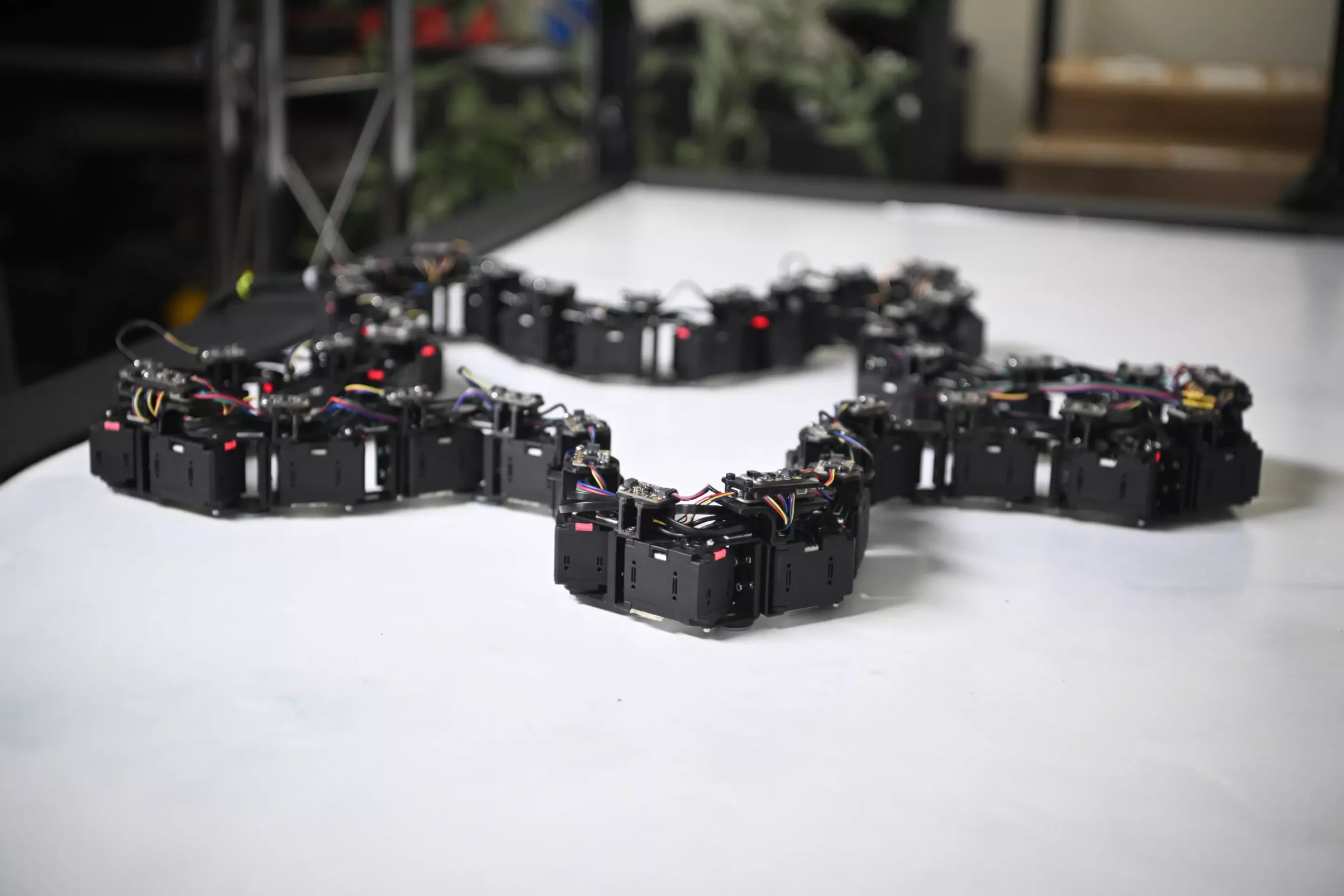The field of robotics is experiencing a transformative shift as researchers delve into the world of multicellular robots, a concept that challenges traditional approaches to robotic design and functionality. One notable project is being developed by a team of roboticists at West Virginia University (WVU), who are pioneering a unique autonomous robotic entity known as Loopy. This innovative structure is not merely an assembly of connected parts but rather a dynamic system capable of reconfiguring itself in response to environmental stimuli. By scrutinizing the design philosophy behind Loopy, it becomes clear that the implications of such technology could be far-reaching, entering domains from environmental monitoring and cleaning up hazardous spills to interactive installations.
At its core, Loopy is composed of 36 identical interconnected cells, forming a circular framework. Each of these cells operates independently, boasting sensors and actuators enabling them to respond to changes in their surroundings. Unlike conventional robots that rely on predetermined programming and centralized control, Loopy operates on principles derived from swarm robotics, where simple individual behaviors lead to complex, coordinated activities. This decentralized approach inspires a more organic interaction with the environment, somewhat akin to how ants collectively maneuver around a food source or how plant roots adapt to access water and nutrients.
The ability of Loopy to reshape its form as it navigates different conditions allows it to excel in unpredictable settings, overcoming challenges posed by contaminants on various surfaces or obstacles in its path. Lead researcher Yu Gu anticipates that this ‘co-design’ capability will revolutionize robotics. By closely mimicking biological organisms, Loopy exemplifies how integrating principles from nature can enhance robots’ adaptability, ultimately allowing them to function effectively in evolving and uncertain environments.
Gu’s research team employs a specially designed test environment that simulates real-world conditions to evaluate Loopy’s effectiveness. This setup includes overhead cameras and a motion capture system, alongside the introduction of heat to replicate contamination areas. The experiment aims to observe how Loopy’s cells react to different surface materials and environmental factors, providing insight into its capacity to autonomously delineate hazardous zones without explicit guidance. The intriguing aspect of this study is that the research process is expected to be non-linear and filled with surprises, revealing unique behaviors that challenge conventional robotic design.
As GWU’s doctoral student Trevor Smith works alongside Gu, they closely analyze Loopy’s responses to uncertainties, including scenarios where the robot lacks comprehensive data or is presented with potentially confusing conditions. The intention is not merely to shape Loopy into a functional tool but to understand how autonomous robots can learn from their environments, potentially harnessing unforeseen adaptations for practical utility.
A significant part of Gu’s research is to juxtapose Loopy’s emergent behaviors against those derived from traditional, centralized systems. Typically, robots are constructed, programmed, and operated based on a top-down approach, which can often render them inflexible in novel situations. In contrast, Loopy functionally embodies a bottom-up model, where independent actions from each cell lead to a collective intelligence that adapts fluidly to changing circumstances.
This dichotomy sets the stage for a broader conversation about how robotics can evolve alongside natural systems. Gu draws parallels to permaculture, advocating for a harmonious relationship among human designers, the robots themselves, and the environments they interact with. This tripartite relationship harmonizes innovations in robotics with ecological principles, potentially leading to sustainable robotic applications.
The biological models that inform Loopy’s design include noteworthy insights drawn from studies on plant intelligence. Gu emphasizes chemical signaling in plants as a metaphor for decentralized communication, wherein individual plant cells adapt to environmental cues, thus collectively guiding root formation. This philosophy underscores the effectiveness of distributed coordination as essential for complex systems to thrive, providing foundational insights for the development of multicellular robotic systems.
In essence, Loopy’s innovative approach encapsulates the blurring lines between a robot’s form, behavior, and surrounding ecosystem. By recognizing that each aspect of Loopy’s operation contributes mutually to its effectiveness, the research heralds a novel future in which robotic systems may work synergistically with their environments, exhibiting intelligence reminiscent of natural organisms.
As robotics embarks on this intricate exploration of autonomy and adaptability, projects like Loopy exemplify a significant reimagining of what robots can achieve. By integrating insights from nature and fostering decentralized intelligence, this research could unlock unprecedented levels of performance across a variety of applications, ranging from environmental monitoring and remediation to creating interactive experiences. The evolution of this technology holds profound implications for humanity’s relationship with machines, inspiring hope for a future in which robotics serves not just functional roles but engages with the intricacies of the world around us.

